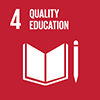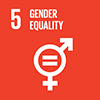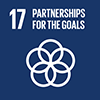June 2022 - You are accessing an old version of our website. The SDGs Voluntary Commitments have been migrated here: https://sdgs.un.org/partnerships
You will be redirected to the new Partnership Platform in 10 seconds.
June 2022 - You are accessing an old version of our website. The SDGs Voluntary Commitments have been migrated here: https://sdgs.un.org/partnerships
You will be redirected to the new Partnership Platform in 10 seconds.
Osaki Town with a population of 13,000 people has been recycling for 20 years and achieved 83.4% recycling rate in 2017 and have recorded No.1 ranking of the recycling rate surveyed by Ministry of Environment for 11 years. We called the Non-incineration Waste Disposal System including separation of 27 items by citizens and collection and processing by a waste recycling company, Osaki System. Osaki System creates not only Environmental Outcomes like less damage from landfill and incineration but also Economical Outcomes like creating new jobs and Social Outcomes like making a scholarship program using revenue from sales of recycled products.
Osaki Town with a population of 13,000 people did landfill disposal of general waste without having an incinerator, but due to the tightening of the remaining years of the disposal site, the longevity of the disposal site has been prolonged, general waste disposal expenses.
For the purpose of starting the Non-incineration Waste Disposal System including separation of 3 items by citizens and collection and processing by a waste recycling company which is called Osaki System, Osaki Town as local government held a briefing session for 4000 households townspeople co-organized with 153 self-governing associations and government offices in Osaki Town over a total of 450 times for about 4 months. Local Government offices said to citizens ‘’Recycling makes change Garbage to Profitable Resources’’ for getting understand of town people. And then Osaki Town has started the recycling business of local government, enterprise and residents cooperation type that sorted 27 items.
As a result, we achieved 83.4% recycling rate in 2017 and have recorded No.1 ranking of the recycling rate surveyed by Ministry of Environment for 11 years since 2006.
Also we have a record to depot city of Indonesia, Bali state, Jakarta special state Started international development of the Osaki system. The purpose of our activity is to create a regional circle symbiotic zone by SDGs with the recycling management focusing on international development of Osaki system and environmental and economic, social fields interlink with each other beyond the purpose at the start of separated fields.
The most important stakeholders are 153 self-governing associations in Osaki Town. They 13,000 people are belongs each self-governing associations and making daily activities including recycling with 27 items separation for strengthen bounds of community. Osaki Town as local government is charge of making law and rules of recycling, invests to a waste recycling company and manages the disposal site. A waste recycling company collects the recycled garbage with 27 items separation and segregates the recyclable materials from municipal solid waste and those trading at a recycling center to be newly established.
(Environmental field) Osaki system is aimed at promoting understanding of garbage separation rules, the local government held learning sessions to citizens with 50 times a year. Citizens separates their garbage to 27 items and move to community’s garbage collection places. And a waste recycling company collects the garbage from 210 collection places. After collection of garbage, a waste recycling company segregate the recyclable materials from municipal solid waste and those trading at a recycling center and make compost production from organic waste through revitalization of an existing composting center. In addition, from 2012, Osaki Town and Japan International Cooperation Agency (JICA) implement a technical cooperation project of Osaki System in Depok city and Bali province of Indonesia for a 6 years, nurturing 59 people spreading instructors, contributing to the reduction of landfill disposal amount. Currently, we also develop new business for Jakarta Special Province.
(Economic field) The waste recycling company creates about 40 employees, raises the total amount of 1 million USD by selling raw materials for recycled products, and returns some profits to the activities fund of the self-governing association. In addition, organic compost made from garbage is reduced to local agriculture by manufacturing and selling 294 tons per year. In addition, the self-government association contributes to improving the domestic self-sufficiency rate of canola oil by commercializing canola oil from canola flower cultivated in compost by canola flower eco project", the project got the first prize of food action competition from the Ministry of Agriculture, Forestry and Fisheries of Japan in 2015. And the contribution to the regional economy, over 200 visitors comes to see Osaki System a year from both domestic and overseas. Also as a result of the increased recognition of the city as Japan's largest recycling rate, Osaki Town collects the total amount of donation is about 270 million USD with the benefit your locality tax scheme called FURUSATO Tax which tax payer pays of their local taxes to municipalities and prefecture of their choice and tax payer get local products as tax exemption .It means the self-government association are contributing to the finances of the town.
(Social field) Women who led the separation of garbage are active in community activities such as volunteer cleanup three times a year, with children from elderly people and settled foreigners. In education, environmental awareness is improved until elementary school students say "garbage disposal = recycling" by environmental learning at schools and homes,. Osaki Town are doing global education in elementary and junior high school town using recycling business as teaching material. In addition, support projects for persons with difficulty in gathering are responsible for confirming the safety of collaboration between the welfare office and self-governing associations. And then, since 2018, when a student who entered a university outside the town comes back to town due to employment etc., a "recycling scholarship" that utilizes gains from sales of garbage which some scholarships are exempt from with credit associations and universities, and started recruiting scholarships for 20 high school graduates per year.
(Outline) The outcome of the environmental field which are recycling rate 83.4%, lengthening the landfill site 50 years, waste disposal cost half of the national average, 6 years Indonesia project tackles SDGs goals 12 and 17. The outcomes of the economic field which are creation of about 40 employees of the, gains 1 million USD from commercialization of organic compost and canola oil tackle SDGs goals 1, 2. The outcomes of the social field which are confirmed the safety of 53 people who are difficult to recycling activities, the community do cleaning volunteer at garbage collection places three times a year, the environment and global education to elementary school students four times a year, promote female success and promotion of active in the next generation promotion of education, international cooperation for young people children, women tackles SDGs goals 3, 4, 5, 17.
(Universality) JICA Project of Osaki System in Indonesia became a successful case of municipalities' internationalization projects that benefit the environment and economic aspects of developing countries that have the problem of "there is no incinerator, financial difficulties due to administration, tightening of landfill disposal sites". In addition, by accepting trainees from Indonesia to Osaki Town, recycling separation rules for foreign long-term residents and activities of self-governing associations are carried out together to promote understanding of multicultural symbiosis. Moreover, it is evaluated that it contributes to the social benefits that the number of students who feel close to foreign countries through recycling has increased due to the implementation of global education using the Osaki system as a teaching material.
(Inclusiveness) The Osaki system is aimed at improving the awareness of environmental learning and environmental consciousness for people with diversity such as those who need welfare support from children, foreign residents who settle in, As we are conducting the understanding of separation rules through activities of self-governing associations, we appreciate that it is a comprehensive effort based on cooperation by administrative agencies, enterprises and residents based on diversity and gender mainstreaming without leaving anyone alone.
(Participatory) Osaki system is supported by citizens with high environmental consciousness and skilled skill of recycling, especially among the self-governing association leaders and government officers, visiting homes to those who are difficult to sort and collect garbage. Despite citizens at the center of this system, the results of consciousness and actions by the government, companies, residents, from the formulation of sorting rules which are upstream of policy up to the process of waste disposal at the downstream are the results of Japan's largest recycling rate.
(Integration) Osaki system not only achieves a recycling rate of 83.4% and lengthens the life of the landfill site for more 50 years, but also reduces the cost of garbage separation, total resources of 1 million USD per year. In addition to economic aspects such as garbage disposal, about 40 employment creation, strengthening safety confirmation through support of garbage separation difficulty, promoting understanding of multicultural symbiosis society through Indonesian exchanges, promoting environmental and global education development.
Usually the cause of the low recycle rate is reluctance of local governments to promote recycling in Japan because shifting to recycling from incineration faces a strong resistance from the vested interest (those who lose jobs, industries), persuading citizens is taking time and hard work (but without their cooperation, recycling cost is 1.5 times higher) and Politicians are not so much interested in recycling. But, especially Osaki System has two leverage point for keeping high recycle rate for almost 20 years,
First leverage point is policy orientation. To contain "#complaints to gvt" from citizens, the local government could intervene to provide welfare program using budget for recycle (desirebly from sales of recycle materials). Also, Osaki town started to provide unique scholarship loan programs for younger generation using sales of recycled materials, together with local banks. In addition, local government started to invent a smart phone application for guiding separation rules with 27 items and to ease burden of citizens.
Second leverage point is Raise the Citizens' Awareness. When Osaki Town faced the capacity of the dumping site would be full in coming several years, they forced to decide to invest on 1) new dumping site, 2) incineration plant, and 3) recycle. With the local community leaders we did more than 500 times seminars for residents and decide to adopt “recycle” rather than costly dumping sites and incineration plants. And the local government still keeping promoting understanding of garbage separation rules, the local government held learning sessions to citizens with 50 times a year. Also community recognized recycle makes some profits not only environmental, economic and educational outcomes, and then contributes to improving the domestic self-sufficiency rate of canola oil by commercializing canola oil from canola flower cultivated in compost by canola flower eco project".
(What is the root cause for preventing the rise of recycle rate?)
If the incineration rate is high, recycling is not accelerated because incineration require a certain level of fixed costs for O&M of plants despite volume of the garbage volume. It means there is little cost incentive for local governments, who own and operate the incineration plants, to reduce garbage by asking citizens to do cumbersome sorting. In fact, there is local governments that burn recyclable garbage (plastic bottles etc) even though it is collected separately, in order to keep enough calories level of incineration plants facing lower volume of garbage and lower calorie.
(Isn’t incineration cheaper than recycling? Isn’t it a root cause?)
According to Osaki Town’ statistical data, the recycling cost is cheaper than incineration in total. On average in Japan where the recycle rate is almost 20%, the cost of incineration is at \\\\15,000 /year. However, Osaki town where the recycle rate is more than 80% is at \\\\7,500/year, half of the average. By the way, the recycling cost gets cheaper only when citizens corporate in sorting and washing garbage they consumed. It makes the costs in recycling plants cheaper because there is no need to sort and wash using expensive equipment. In other words, the more the governments spend the money to recycle the more recycle rate goes up, but is not sustainable and unacceptable in terms of fiscal policy. Citizens’ cooperation is “must”. For Local governments which have incineration plants already, introducing recycling is just adding costs. But for those who will experience its duration period ends, recycle would be one of the options for next generation waste treatment. In addition, the cleaner recyclable garbage is, the higher sales price. Thanks to Osaki citizens, our garbage is well washed and clean, and we can sell at higher price (rank AA or A).
The local government prepares a regulation concerning the Declaration to Promote SDGs in order to promote understanding of SDGs and formulation of the next comprehensive plan. We will also consider municipalities collaboration with Indonesia with common goal of SDGs. For next step, Osaki Town aims at attaining a recycling rate of 90%, to recycle used disposable diapers accounting for 30% of the landfill waste, in collaboration with neighboring cities and companies, to conduct demonstration projects. We also consider neighboring cities and universities to commercialize food waste as an unused resource and sell it as feed. Furthermore, we regarded human waste as an unutilized resource, renew it to a methane fermentation type treatment facility, and study creation of renewable energy and liquid fertilizer production. In terms of society, consider establishing a school for overseas trainees who will learn about support business and recycling business for settled foreigners who are increasingly centering on self-governing associations. We are going to be the SDGs area management model of area with 10,000 people with the circular economy.







 Start: 01 September, 1998
Start: 01 September, 1998 Completion: 01 September, 2098
Completion: 01 September, 2098